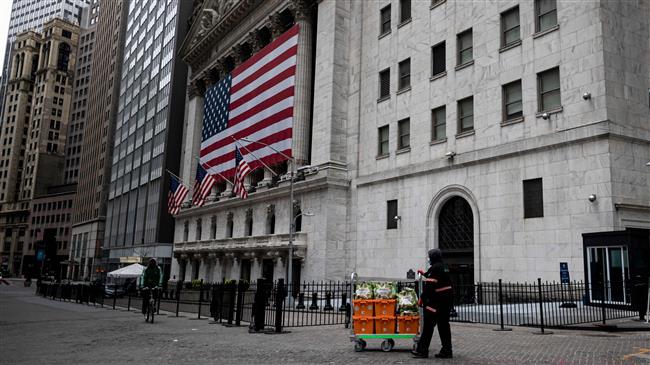Wall Street drops as oil traders cannot give away US crude
Wall Street tumbled on Monday after US crude futures turned negative for the first time ever, with traders forced to pay to unload crude as the May contract expired during a global economic slump unleashed by the coronavirus outbreak.
The S&P energy index tumbled 3.7% after the front-month May US West Texas Intermediate (WTI) contract actually turned negative, with sellers offering $37.63 a barrel to any traders willing to take it.
With billions of people staying home around the world due to the coronavirus, physical demand for crude has dried up.
“What the energy market is telling you is that demand isn’t coming back anytime soon, and there’s a supply glut," said Kevin Flanagan, head of fixed income strategy at WisdomTree Asset Management in New York.
He said lower oil prices could boost the economy if it encouraged people to buy more fuel, "but that requires people getting out.”
Year to date, the energy index has lost 45%, by far the worst performer among 11 sectors.
Weathering the broad market sell-off, Amazon rose 0.8% and Netflix jumped 3.4%.
Those companies have benefited from additional demand as millions of people stay home due to the coronavirus.
Netflix reports its quarterly results on Tuesday after the bell.
Helped by a $2 trillion US government package to stimulate the economy, and by bets that the virus was nearing a peak in the United States, the S&P 500 has climbed over 25% from its March low.
The benchmark index remains almost 17% below its February record high, and analysts have warned of a deep economic slump from the halt in business activity and millions of layoffs.
US jobless claims touched 22 million in the four weeks to April 11, and analysts have forecast as many as 5 million more in the latest week. A reading of an April U.S. manufacturing survey, also due on Thursday, is expected to slide to recession-era levels.
The Dow Jones Industrial Average dropped 2.44% to end at 23,650.44 points, while the S&P 500 lost 1.79% to 2,823.16.
The Nasdaq Composite dropped 1.03% to 8,560.73.
In extended trade, International Business Machines Corp rose 0.5% after it posted quarterly revenue slightly lower than Wall Street expected, but beat profit targets.
During Monday's session, volume on U.S. exchanges was 12.3 billion shares, compared to a 13.4 billion average for the full session over the last 20 trading days.
Declining issues outnumbered advancing ones on the NYSE by a 2.99-to-1 ratio; on Nasdaq, a 1.62-to-1 ratio favored decliners.
The S&P 500 posted 10 new 52-week highs and no new lows; the Nasdaq Composite recorded 39 new highs and 20 new lows.
(Source: Reuters)
Hamas: Israel escalating ceasefire violations in Gaza
Venezuela's government declares unwavering unity behind Maduro
VIDEO | Global outcry over Venezuela president abduction
Iran keeps wheat import subsidies despite cutting other food supports
Venezuelan military stands with acting president after US kidnapping of Maduro
VIDEO | Press TV's news headlines
VIDEO | Protesters in Toronto slam US kidnapping of Venezuelan president
Israeli troops detain, intimidate Palestinian toddler in West Bank










 This makes it easy to access the Press TV website
This makes it easy to access the Press TV website